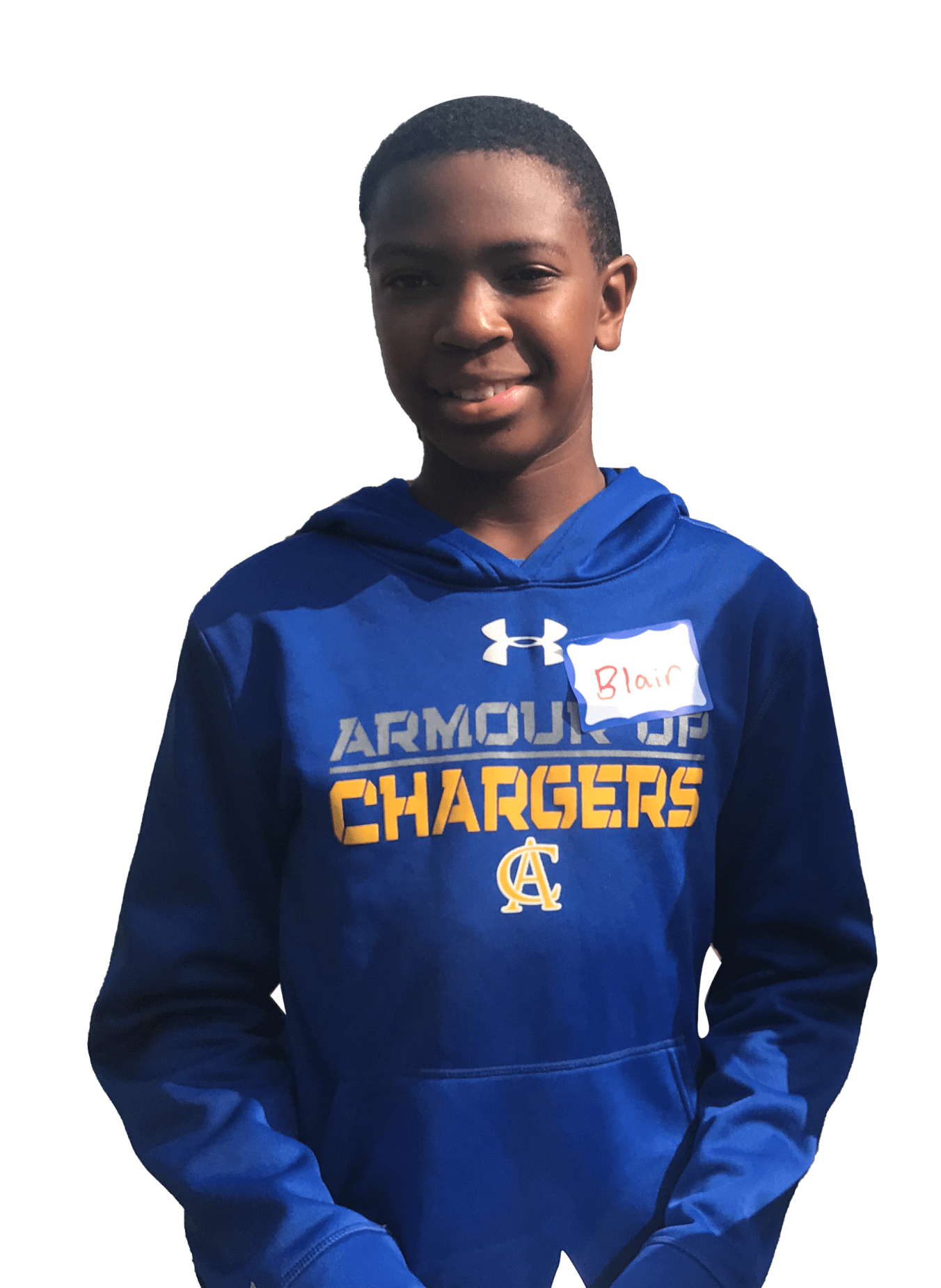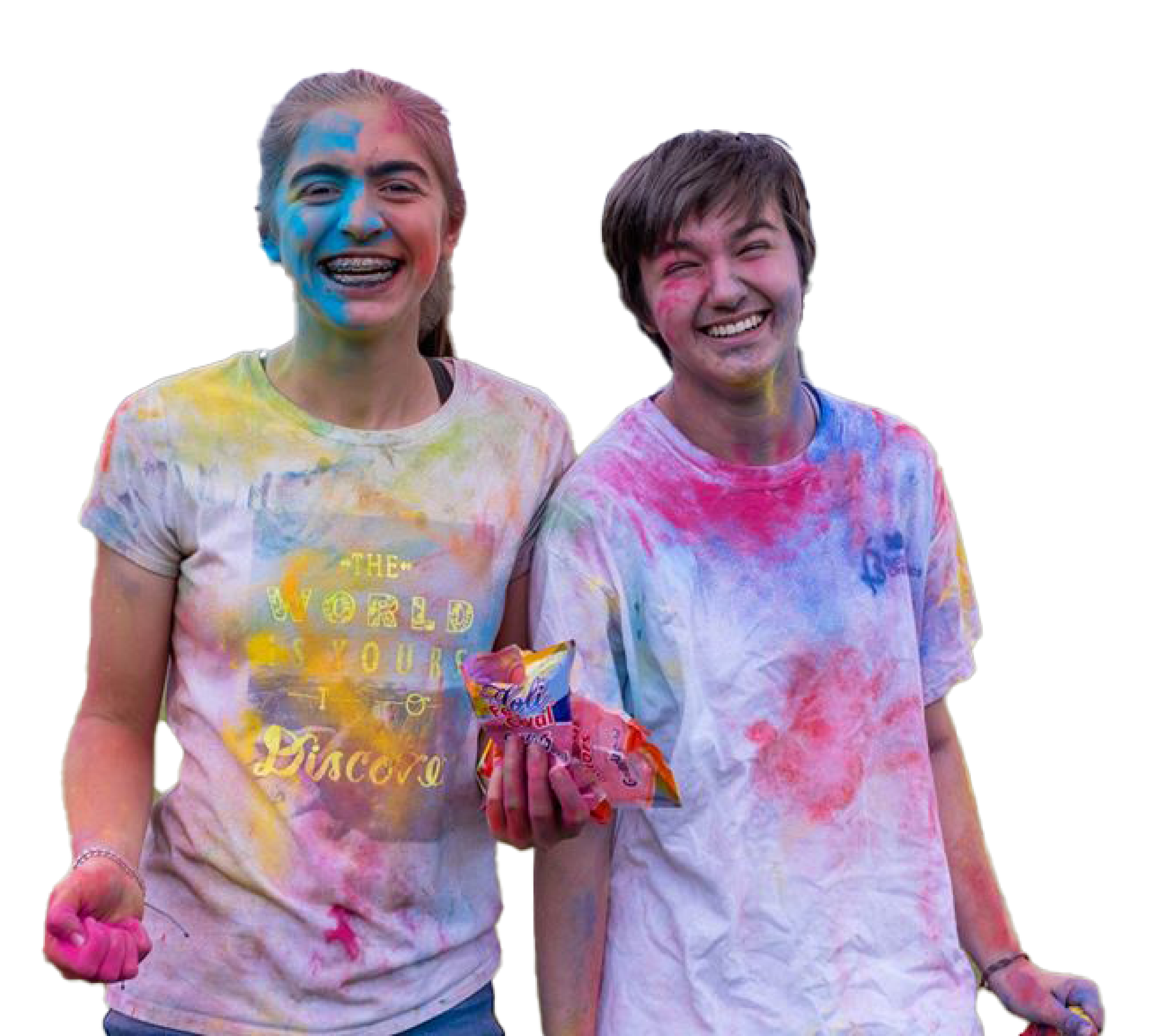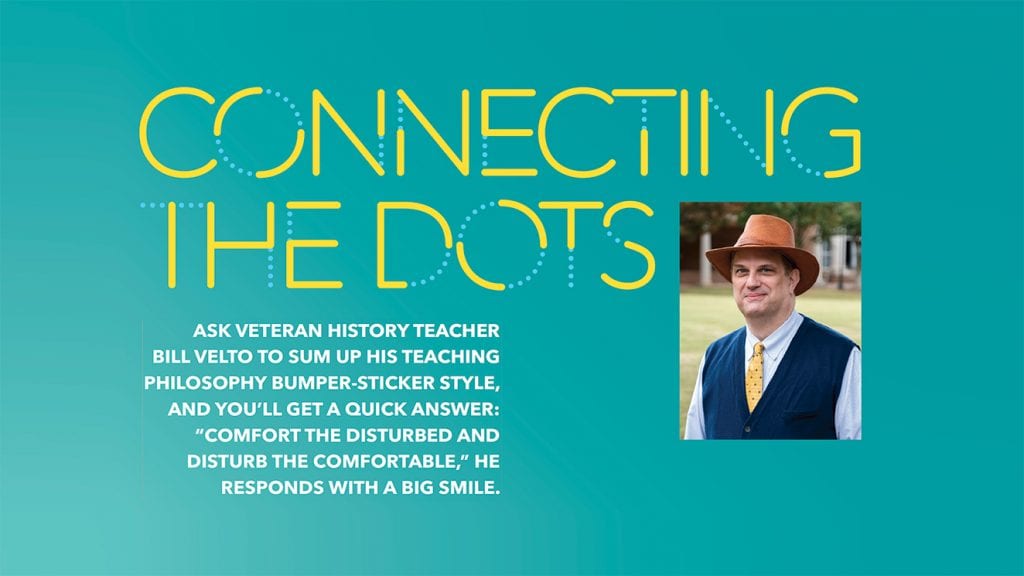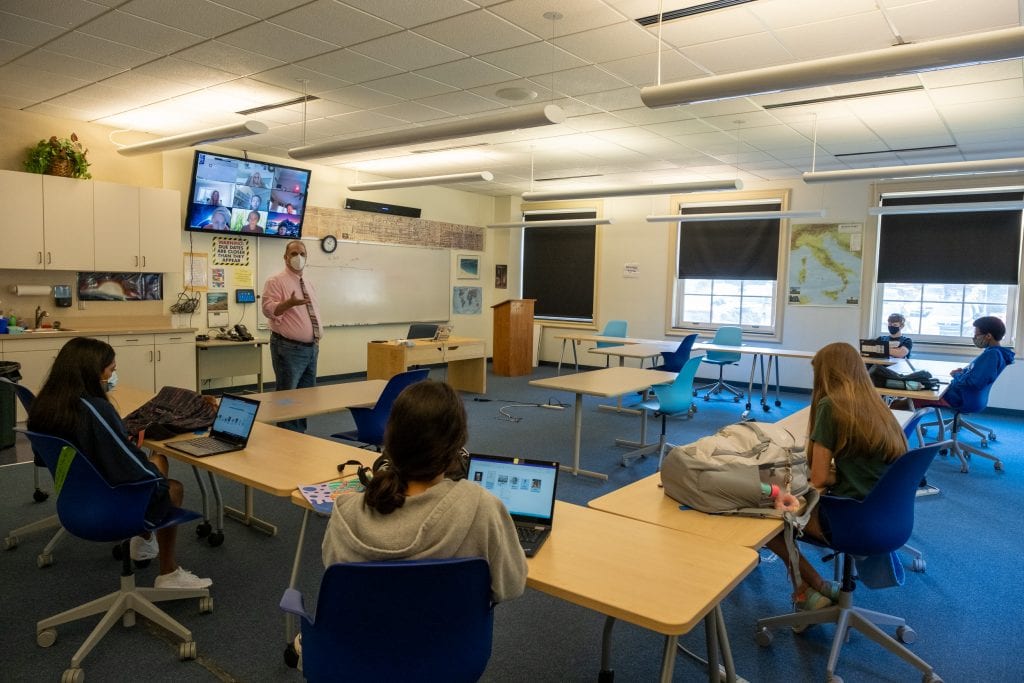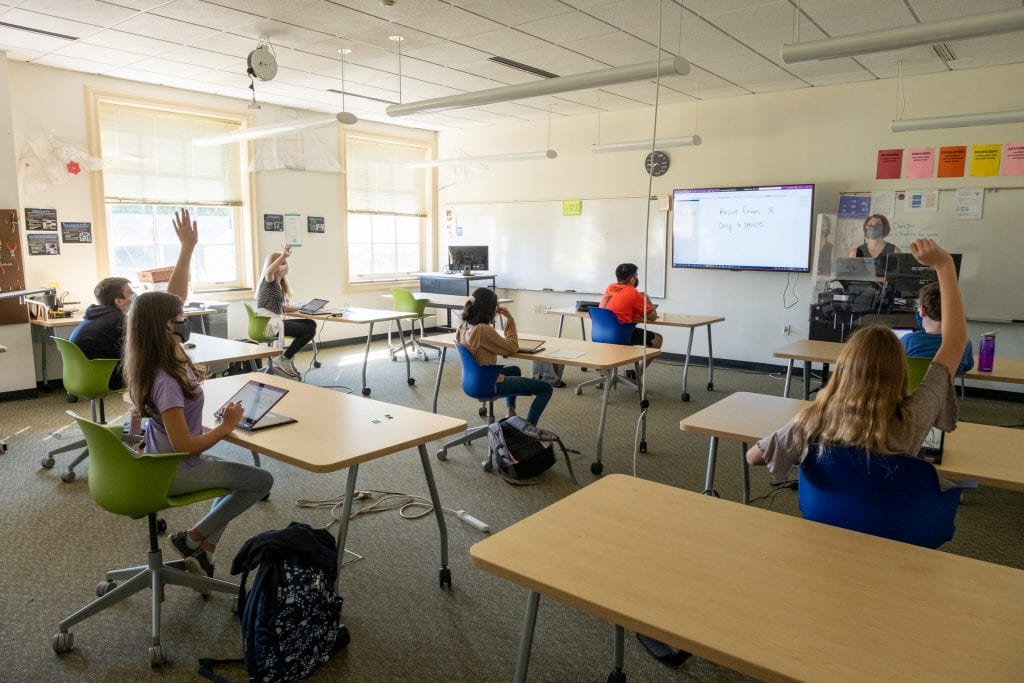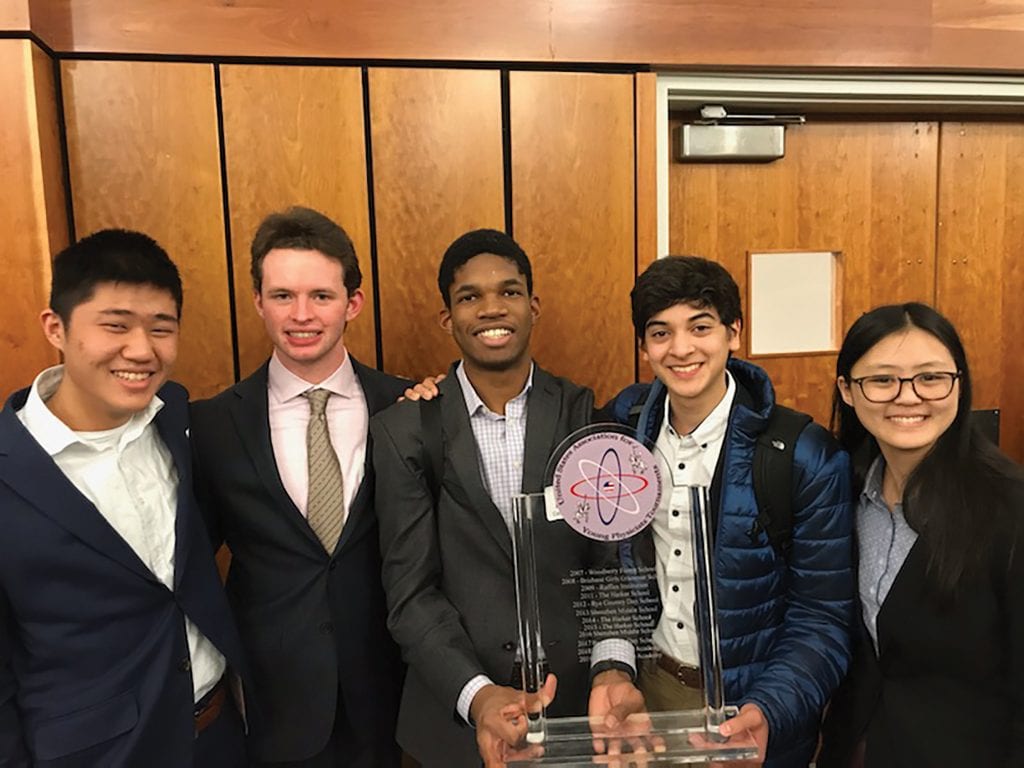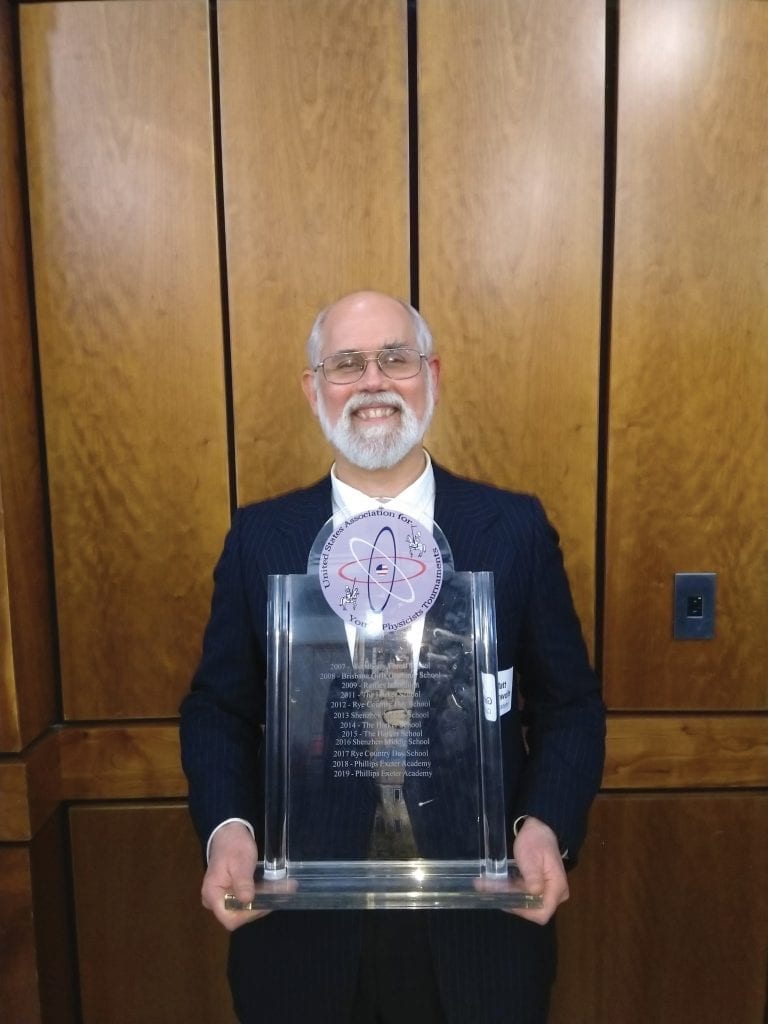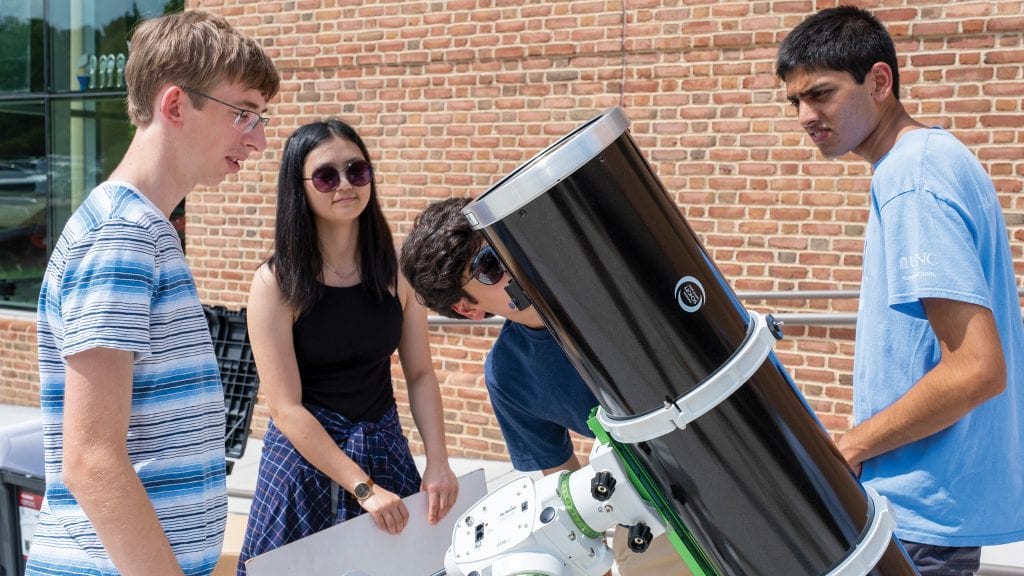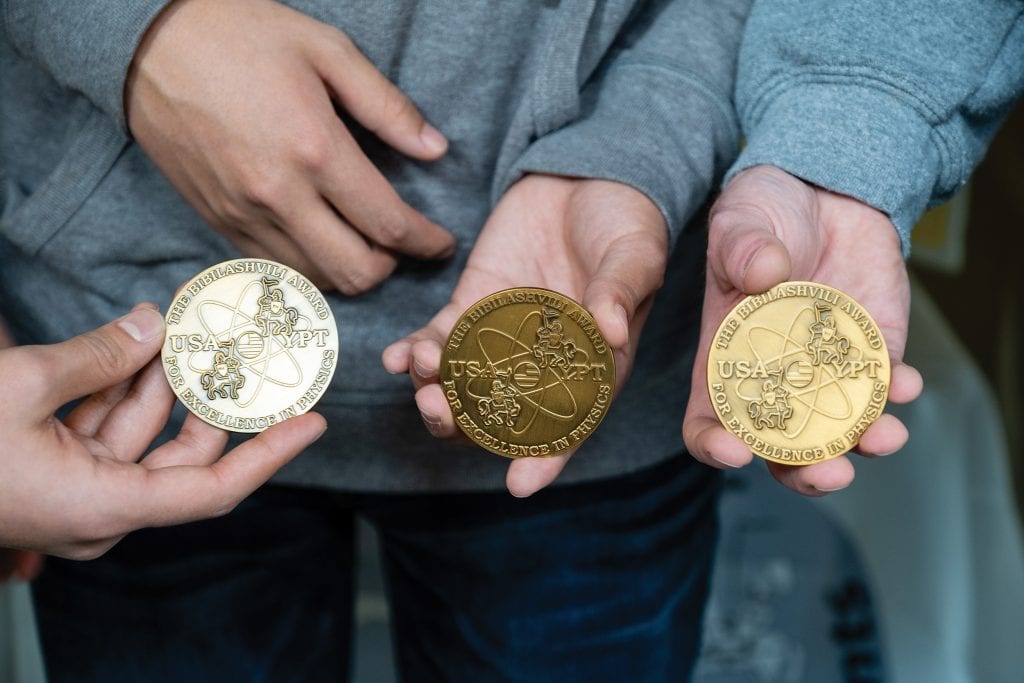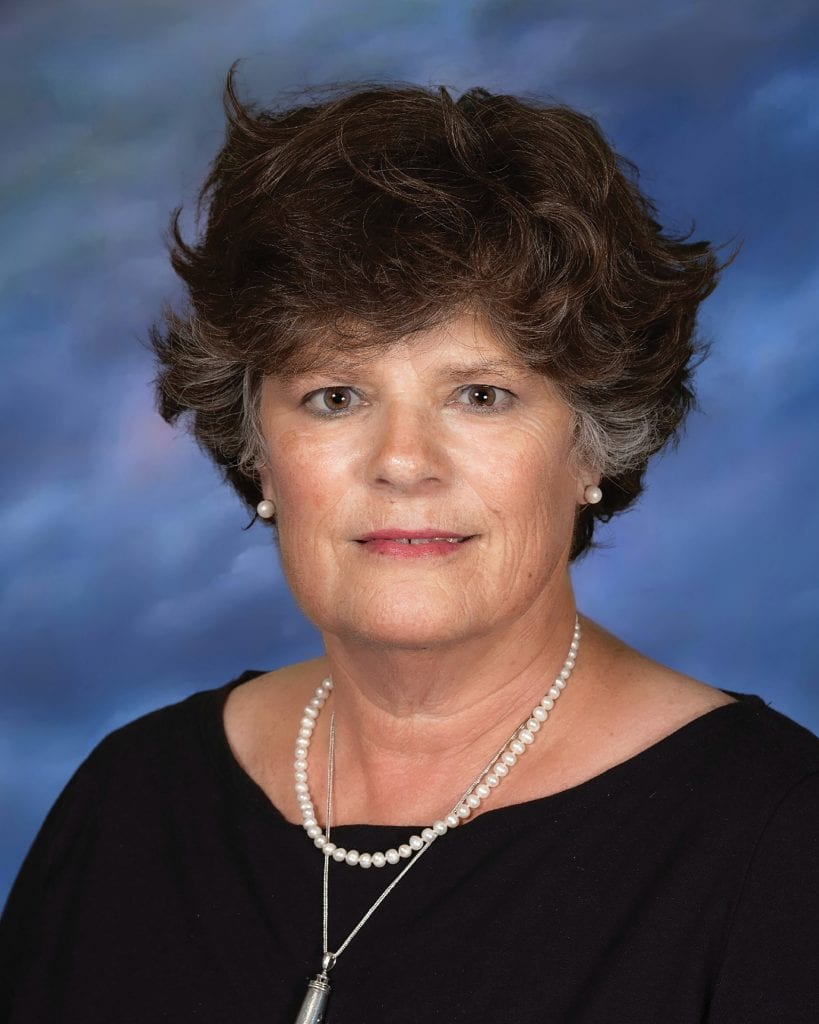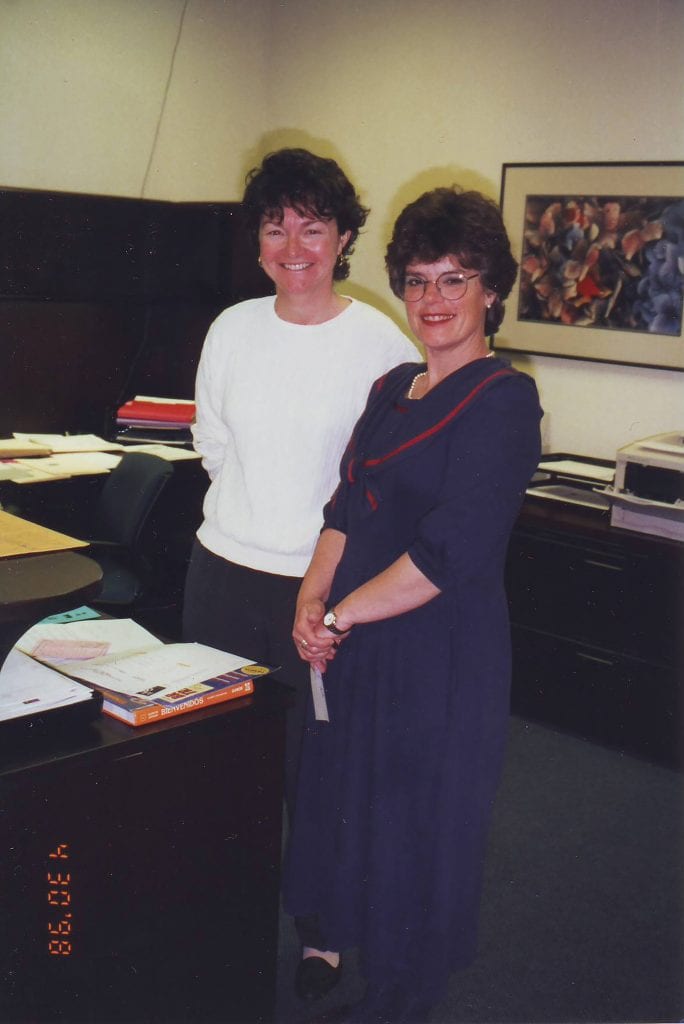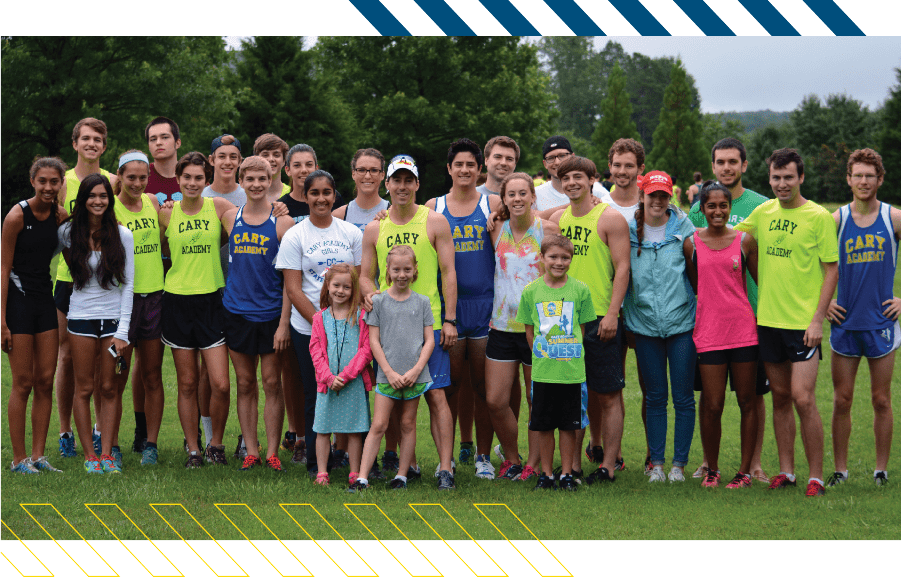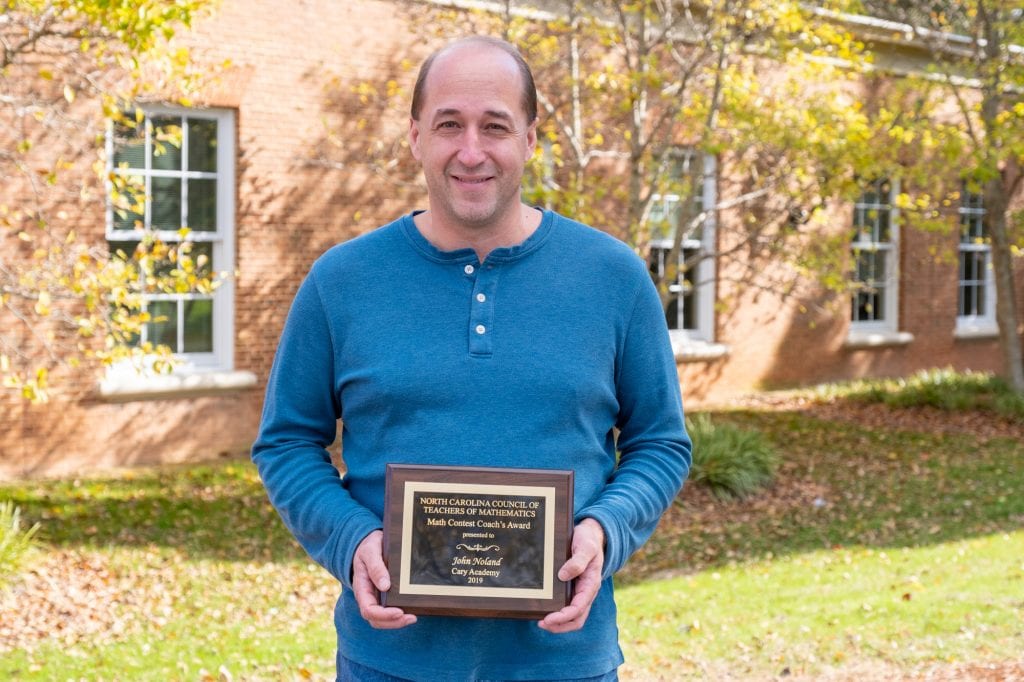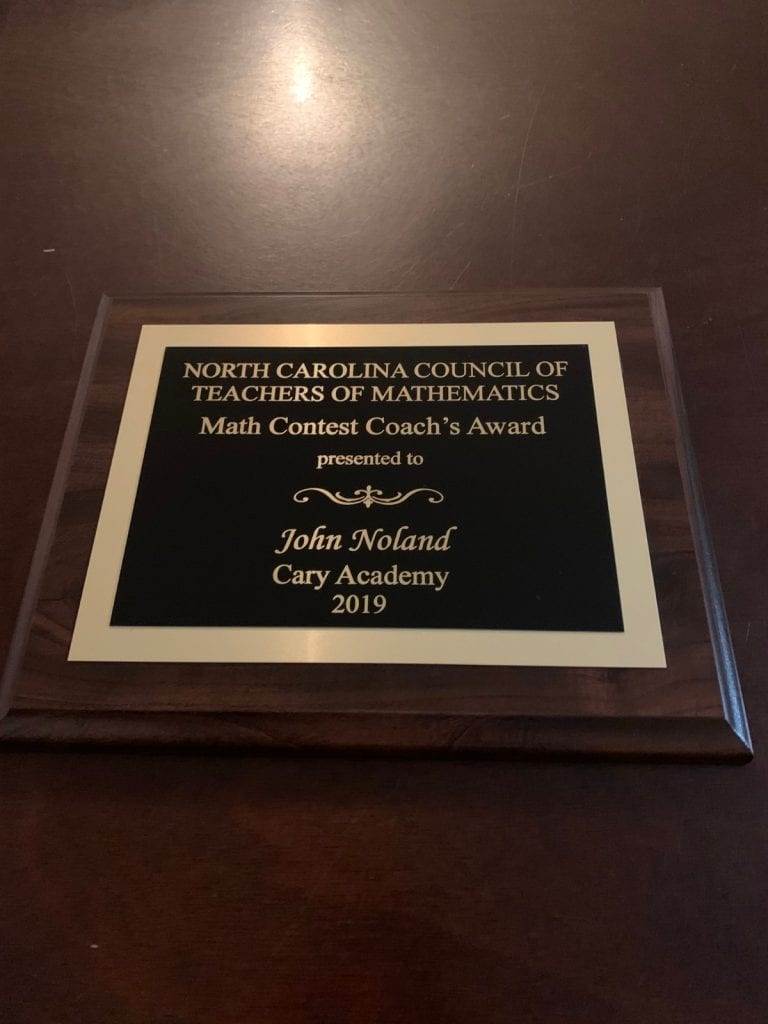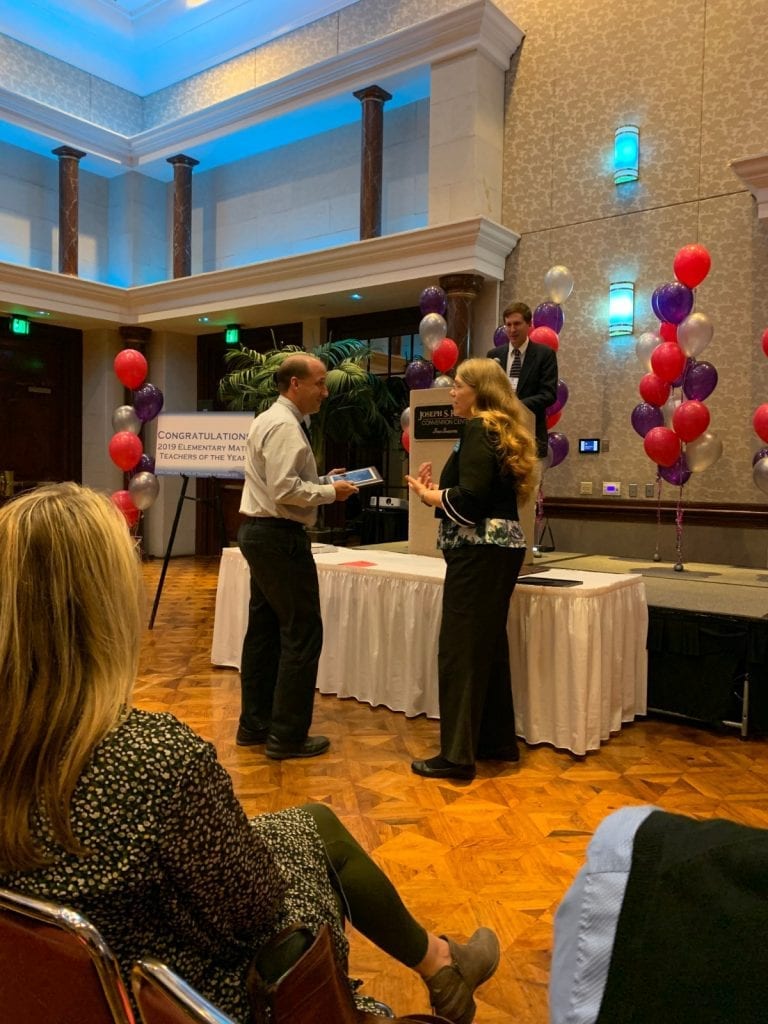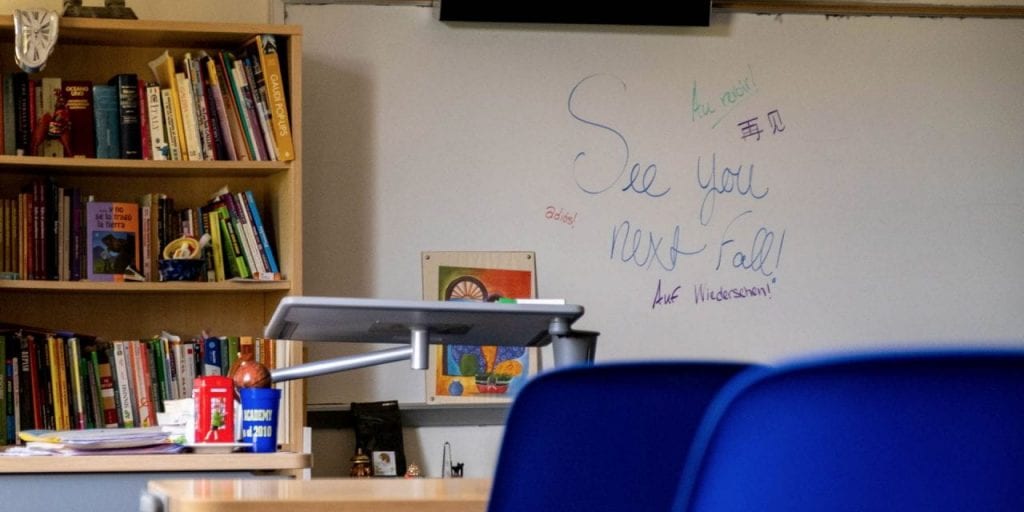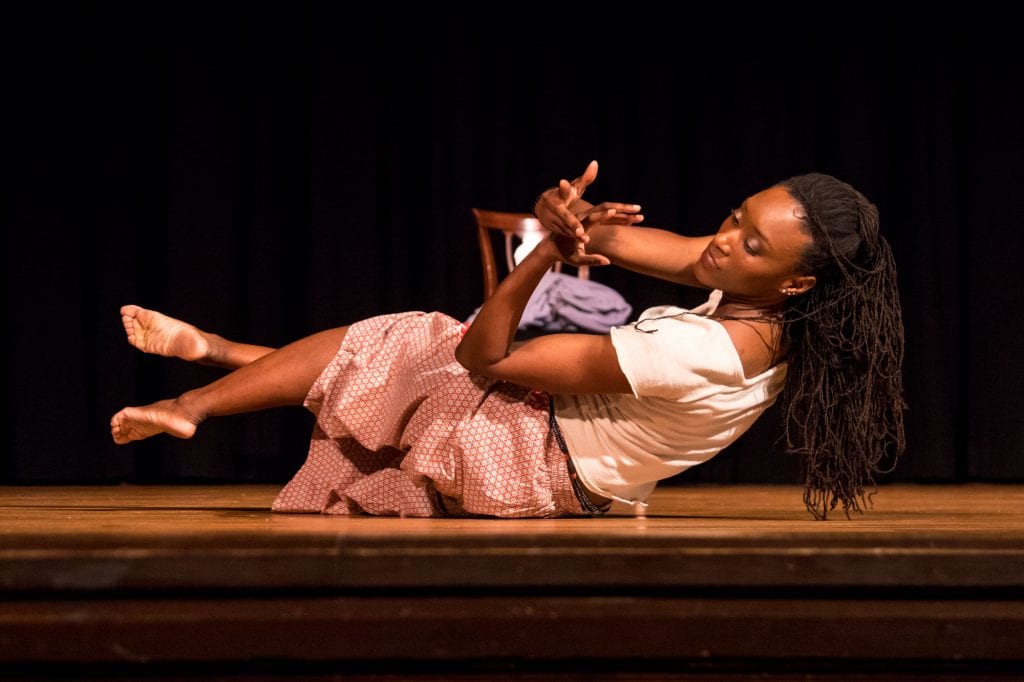ASK VETERAN HISTORY TEACHER BILL VELTO TO SUM UP HIS TEACHING PHILOSOPHY BUMPER-STICKER STYLE, AND YOU”LL GET A QUICK ANSWER: “COMFORT THE DISTURBED AND DISTURB THE COMFORTABLE” ,HE RESPONDS WITH A BIG SMILE.
It is an oversimplification for sure—it was meant to be a bumper sticker, after all—but one that nonetheless encapsulates two of Velto’s enduring passions. The first: pushing students to stretch outside of their comfort zones to ask difficult questions and consider new perspectives. And, the second: inspiring and instilling empathy for his fellow humans.
HARD HISTORY
For the last twenty years in CA’s Upper School, some of Velto’s most popular classes have delved into the dark side of our collective history, tackling challenging topics like genocide, human trafficking, terrorism, and extremism. And while it might be more comfortable to maintain a degree of distance from such difficult subject matter—to consider it from a safe remove through a solely historical lens—Velto instead asks his students to lean in. He encourages them to dig deep to find connections—even uncomfortable ones—and consider how the past has led to and shaped the present.
“The hard history of the past certainly isn’t dead. And it is rarely as distant as we’d like to think it is,” muses Velto.
Crafted in the wake of the September 11 attacks, Velto’s terrorism course exemplifies his approach. Terrorism is an exceptionally complex subject and one that fascinates him (students are encouraged to draw upon his extensive personal library of books on the topic). To foster a multi-faceted understanding, Velto requires students to step outside of themselves to consider the issue from all sides—some of which complicate and problematize how we, as Americans, tend to view our place in the world.
It would be understandable if Velto required his students to demonstrate their mastery with a long and thoroughly-sourced research paper (and to be fair, many choose to do just that). However, Velto—whose background in theatre is almost as comprehensive as his in history—is open-minded, preferring to trust students to leverage their strengths and creativity to define their capstone projects. As a result, students have produced videos, board games, pottery, poetry, and even interpretative dances that go beyond simple recitation of facts and figures to reflect on terrorism’s root causes, social impacts, policy challenges, and human costs.
Velto’s classes are continually evolving. His responsive curriculum is a direct reflection of the closeness of history and the value of letting students chart their own course as they consider how history continues to shape their communities, even their own lives.
Take, for example, his Slavery and Human Trafficking course. Initially intended as a historical survey of the history of the Atlantic slave trade, Velto broadened the class’s scope after the discovery of a sex-trafficking ring in Cary. The revised curriculum casts slavery not as an issue of the distant past but as a contemporary plague that hits closer to home than most imagine.
“Many students are shocked to learn that more people are enslaved around the world today than in the 19th century,” shares Velto. “It’s eye-opening when they see how the roots of structural racism grew around things like the Emancipation Proclamation and the 13th Amendment.”
For Jennifer Guy (’05), conversations sparked in Velto’s classes presaged the current national conversation about structural racism: “Mr. Velto’s lessons led to necessary and thoughtful conversations that are important for high school students. As an African-American female (and one of very few African-American students in my class), it gave me a deep appreciation for the type of education Cary Academy provides. Not sugar-coating history and race relations for a group of students—the majority of whom are white—is paramount to becoming an anti-racist society that celebrates and appreciates people from all ethnicities.”
THE PATH TO UNDERSTANDING
Tackling such challenging subject matter relies on providing students with a toolkit of critical thinking skills. With this in mind, Velto joined his colleagues in the Upper School history department to reimagine the school’s world history curriculum, ensuring that all ninth grade students start with a course on themes in, and critical approaches to, history. Based in historical theory, the course lays the foundations for success throughout the rest of a student’s path through history courses at Cary Academy.
“The reality is that these critical thinking skills are useful beyond just history and beyond Cary Academy—I’ve had alumni tell me how impressed their professors are with their research, organization, writing, and analytical reasoning skills. All of that starts with this class. It’s really kind of neat to see kids apply these skills to things like posts in their social media feeds,” Velto explains.
Once students complete Themes and Approaches to History (SOC 101), possible courses open to them follow a framework known as Passages Across Themes in History (PATH). Known as “PATH,” this framework allows faculty to develop semester-long courses on topics like the French Revolution, Latin American history, the rise and fall of the Soviet Union, and the impact of the Industrial Revolution on imperialism, to name a few. This ultimately lets faculty teach to their strengths and allows students to follow their passions, taking deep dives into topics that they might not otherwise encounter until much later in their collegiate careers.

For Velto, PATH allows him to teach difficult topics to students who seek to have their viewpoints challenged. “I’ve tried in my career to focus on ‘hard history’—things that are out there in history that are unpleasant, things many people would prefer to sweep aside in favor of focusing on the patriotic, the boisterous, the fantastic,” shares Velto. “But that does a disservice to everyone, especially those whose voices would go unheard, as well as to our students, who may not ever encounter things like slavery, radicalization, and ethnic cleansing in their lives.
“It can be overwhelming for students to realize how many things in their lives are connected to something that they not only view as evil but didn’t even realize still existed,” continues Velto. “But these conversations—as they grapple with the cognitive dissonance brought on from difficult facts and uncomfortable stories— helps them develop empathy and a more nuanced worldview, as they see the broader connections in the world around them.”
And, for Velto, this might be one of the most crucial lessons of all: an understanding that not everyone has the same experience—that everyone, in one way or another, is enmeshed in and effected by legacies of the past that have deep connections to the present. “I was raised by parents who were active in the Civil Rights Movement, and my father was a community organizer. They made sure I was aware from an early age that I perceive, interact with, and move through the world very differently than other people do,” says Velto.
By fostering awareness about empathy in the classroom, he hopes to help students to become better people. “Improving someone else’s life. That’s ultimately the point of being a teacher, isn’t it?” reflects Velto, whose philosophy was inspired by one of his own teachers.
“The flower produces seeds that get spread to become more flowers, which produce more seeds… I’m a flower. To a certain extent, I’m spreading the seeds of these ideas. Some will find fertile soil and bloom quickly. Others will lay dormant and bloom much later. Some may never bloom. One of the challenges of teaching is the fact that I may never know which seeds bloom and which don’t.”
Velto’s former students rave about the positive impact his teaching philosophy has had on their lives. “From seeing the way Bill is with kids, I realized I could do more than just teach information from a book. I can transform a student’s experience and help them grow as a full human being,” shares Alyson Titkemeyer (’04), who immediately sought Velto’s advice when she first began teaching (she’s remained in touch, monthly, ever since).
LIFE LESSONS
Titkemeyer’s experience isn’t unusual; Velto’s care and support for CA’s students don’t end at the classroom door. In addition to serving as an assistant coach for the varsity softball team, Velto has played a critical role as faculty advisor for numerous student clubs and affinity groups. He helped foster what became the Muslim Student Affinity Group during discussions of anti-Muslim violence after September 11. He stepped in to support the Indian Subcontinent Affinity Group when their advisor could not continue. And his passionate advocacy for LGBTQ+ issues made him a perfect fit for the Gender and Sexuality Alliance, alongside lead advisor German Urioste.
“In many ways, I think the affinity groups are among the most important work done here. Before kids can learn, they have to feel they are welcome. They have to connect with the community. They have to become a part of the community,” offers Velto. “I think the affinity groups really help to do that.”
Even after his students have graduated from CA, Velto keeps in touch and maintains a virtual open-door policy.
He sees his students as “advisees for life”—and continues to share advice on topics that range far beyond the history classroom. More than anything, Velto hopes his students take away “that I care about them as a person and want them to be successful, in all aspects.”
“Mr. Velto has an almost unique ability to teach in the classroom, while also molding students to love learning, providing support and advocacy for students in need, lending an ear and advice to students who may not be able to find it elsewhere (or need an alternative opinion), and caring for students as individuals,” writes Alex Wilson (’04). “Looking back on my time at CA, I realize that it was the conversations with teachers like Mr. Velto during advisory, after school, in the throes of college searches, after athletic defeats, or just in the hallway that have stuck with me the most.”
Maggie Zeillmann (’13) (née Birmingham Corbett) credits Velto for helping her find success after she chose to become a history teacher herself. “Bill was my advisor and an important mentor for me, especially after graduation. Now in my fourth year as a history teacher, it’s invaluable knowing I can turn to him when I have questions or when I’m looking for ideas about how to teach content or skills with my students. His help has been especially valuable this year. When my school went one-to-one with computers for every student this year, Bill made time to Zoom with me, helping me develop a plan for using technology in my classroom based on his wealth of experience. Teaching is a team sport, and I feel lucky to have such a wonderful mentor to turn to when I need input.”

PLANTING SEEDS
Velto’s positive impacts aren’t limited to the Cary Academy community. In addition to his long term role as the Lead Social Science Teacher at the Governor’s School of North Carolina, recently, Velto’s expertise in teaching about terrorism and his ever-present willingness to raise new ideas led to an opportunity to collaborate with the Polarization and Extremism Research and Innovation Lab (PERIL) at American University.
Responding to PERIL’s release of a fictional short film illustrating the dangerous rise of domestic radicalism in the era of COVID-19, Velto worked with PERIL’s Director, Cynthia Miller-Idriss, and Christina Cliff, Assistant Professor of Political Science and Security Studies at Franklin Pierce University, to co-author a discussion guide for teachers, parents, and students. The guide offers advice on approaching and developing strategies to address extremism, including potential election violence or volatility, within learning communities.
Despite the national attention from educational colleagues, achieving success and acclaim within the state, and having put his mark firmly on Cary Academy’s curriculum, Velto remains remarkably humble, “I feel lucky every day that [CA] gives me the incredible opportunity to talk to students about topics that I am deeply passionate about. It certainly doesn’t feel like I’ve been here for 20 years.”
“FROM SEEING THE WAY BILL IS WITH KIDS, I REALIZED I COULD DO MORE THAN JUST TEACH INFORMATION FROM A BOOK. I CAN TRANSFORM A STUDENT’S EXPERIENCE AND HELP THEM GROW AS A FULL HUMAN BEING.” —ALYSON TITKEMEYER (‘04)
While Velto feels the tug of wanting to be closer to his family in upstate New York, he says that his experience at CA has set “such a high bar, that no other institution comes close.” He notes that CA’s forward- thinking leadership, willingness to embrace innovative curricula and emphasis on technological tools to advance learning are a large part of what keeps him in Cary.
More than anything else, though, he credits his students. “The thing that’s remained most consistent over the years is the sort of kids we’re fortunate to teach at CA. They come from all sorts of backgrounds and experiences, but they all find a way to accept each other. They help each other find their fit.”
Although, if you ask his students, Bill Velto plays a pivotal role in building that community.
